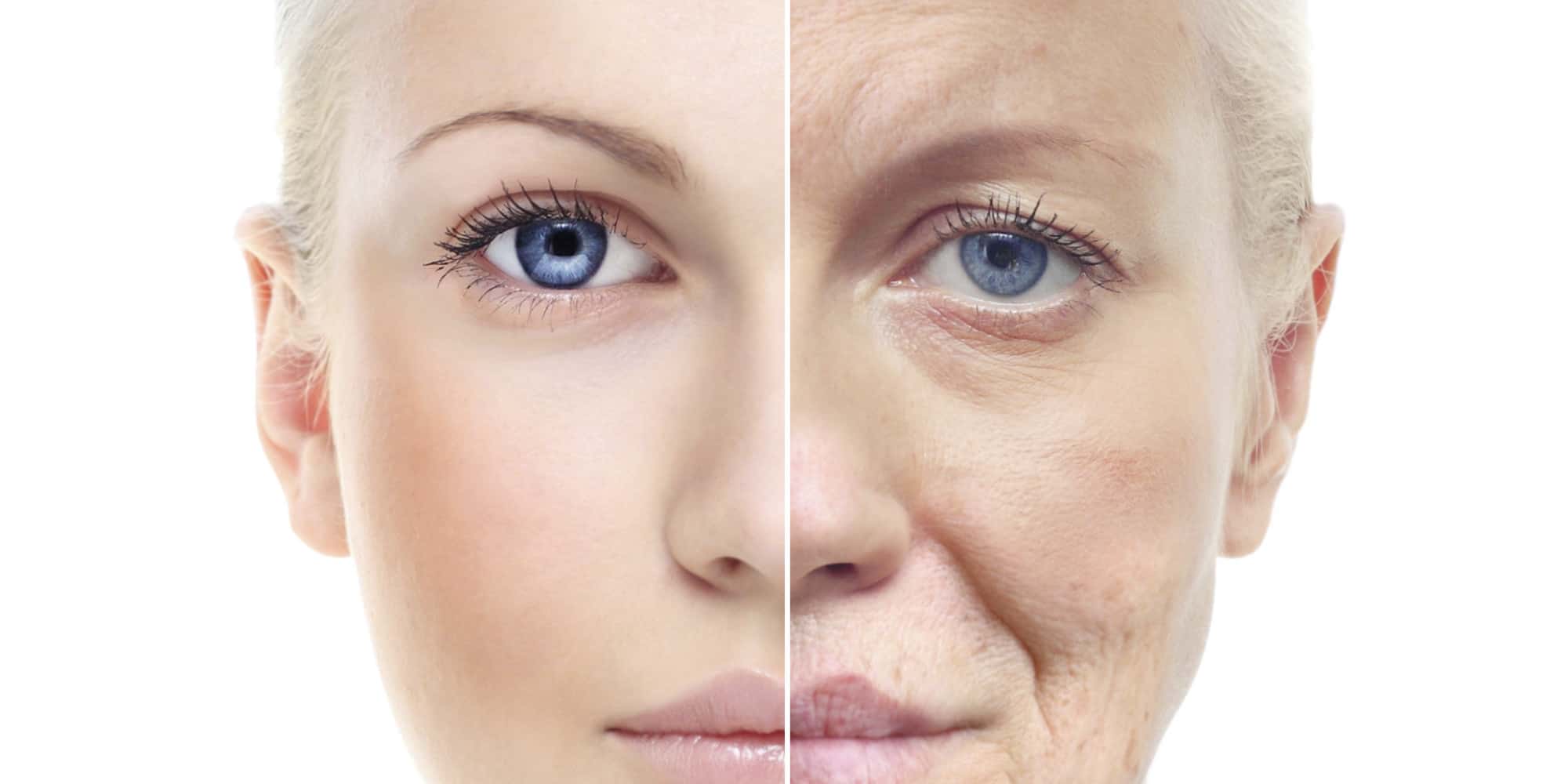Medically Reviewed by Dr. Lisa Hartford, MD
Optical imaging is a biomedical method to look inside the cells without using non-invasive methods. Since knowledge is power, knowing what's going on in our bodies and cells may be helpful to treat it with more effective tools. Using optical imaging techniques, dermatologists may recommend custom skin treatments and products.
It may be helpful for people with aging signs, sagging skin, and spots on the skin. As skin shows these signs with the passing years, studying it with optical imaging is insightful for promoting skin tightening, lifting, and anti-wrinkle treatments. Keep reading to learn more about optical imaging technology and its applications in skin tightening.
What does Optical Imaging do?
Optical imaging gives a visual representation of contrasting light absorption in the different chemical components of the tissues. This method uses light and photons to get images of tissues, cells, and molecules. Near-infrared fluorescence (NIRF) uses 650–900 nm wavelengths for optical imaging. The optical imaging method is non-invasive and reliable to get a good look inside the tissues.
Another benefit of optical imaging of the skin is that it does not expose the patient to harmful radiation, such as X-rays. It uses ultraviolet, visible, and infrared light to see the tissue and the impact of treatment on it. Clinical imaging techniques penetrate over a hundred microns for optical imaging of skin. Another method to learn more about skin tissue is to use histopathological analysis for better accuracy.
Optical imaging using Raster-scan optoacoustic mesoscopy (RSOM) performs with a higher penetration power of several millimeters in tissues. This allows precise visibility in comparison to previous methods. Besides, as it combines optical excitation and acoustic detection using wideband ultrasound waves, it can generate images of tissue structures using optical absorption within a tissue sample.
How does Detectable Using Optical Imaging Work for Detecting Cellular Changes?
Optical imaging is ideal for understanding the internal properties of the tissues and cells. These cells scatter the light depending on their absorption level. This is useful for understanding the metabolic changes and what abnormality may impact these cells in the future.
Biomedical research may be employed for clinical diagnosis and treating the skin for inflammation, cancer, tumor, and aging.

In addition, the method is used in dermatological clinics to know the oxygen saturation in cells and tissue physiological processes. Gene expression profiling plays a massive role in skin aging and tightening. The same application can be employed for the same. Protein function, drug impact, and therapeutic evaluation can be done under the same technique.
Overall, functional, molecular, and anatomical information can be collected to use further in the clinical healing of the tissue.
As we know, the tissues need to be extracted for precise evaluation due to the less penetrating power of the light. Therefore, one update had to be made in the technique to make optical imaging versatile and non-invasive.
Otoacoustic imaging may even help in getting three-dimensional models for cell light distribution. Short light pulses and thermoelastic expansion are sent to the tissue that irradiates the light. Ultimately, image reconstruction is done over 1mm for deep tissues and less than 1mm for superficial tissues. With this technology, we can get 200 μm image resolution for a few centimeters of tissues.
Applications in Skin Tightening
Aestheticians may use lasers, optical coherence tomography, or photography to collect skin imaging. This way, they can look at the dermis and epidermis under the skin surface. The clinical relevance of these skin perimeters aims towards healthy skin and learning more about an individual's skin conditions.
As we age, the skin's elasticity decreases due to decreased collagen production. Various factors result in signs such as fine lines, wrinkles, age spots, blemishes, sun damage, and sagging. With technology to understand skin and treat it as needed, it's easier to manage these symptoms.

Intense light therapy with flashing various infrared wavelengths penetrates deep into the skin while using Radiofrequency for massaging and heating the skin. Dermal remodeling can be done as it results in dermal collagen formation without being non-invasive.
Combining photodynamic therapy (PDT) with RF targets aging signs and activates better oxygen to the cells locally. The treatment of therapy is for wrinkles, acne, rosacea, and sun damage (actinic keratosis).
Additionally, a Pulsed Dye Laser (PDL) with blue light and yellow light concentrated beam is excellent for eliminating the appearance of blood vessels on the skin. The action of beams works in blood vessels with no damage to the skin. As a result, photorejuvenation of the skin is possible.
Scientific Evidence
Scientists have studied the skin rejuvenation properties of electro-optical synergy technology. A clinical study with six patients was done to learn about connective tissue behavior with histological and immunohistochemical techniques. In addition, they used computerized morphometric analysis for more accuracy.
The participants were classified into Fitzpatrick skin types 3 to 4 with class I to II wrinkles. They were given three months of electro-optical synergy treatment with 6 sessions spaced at 2 weeks. The treatment included the application of a topical anesthetic for 90 minutes before applying the cooling gel. This gel was prepared for uniform conduction of the thermal energy.
The skin was treated with an E-light device with IPL and RF energies simultaneously. Alongside, a cooling system was used to soothe the skin. Each participant was given 12 pulses on each side. They were told to stay out of the sun as a precaution. No one reported pain, excessive heat, or side effects during the treatment.
The results were compared to initial observations recorded before the experiment. Photographs and biopsies were taken and studied for collagen types I, III, and VII, new collagen, tropoelastin, and total elastin.
After three months of the treatment, the skin had a massive improvement with increased levels of collagen and total elastin. The experiment concluded how combining RF and light pulses can improve facial elasticity with a non-invasive method.
At-Home Device to Delve Into
You may consult a dermatologist to understand your skin's need for wrinkles and sagging treatment. In addition, you may invest in good skin care tools that deliver results with consistent use. We recommend using EvenSkyn® Lumo, an anti-aging and skin-tightening device with radiofrequency technology. Moreover, it has LED light therapy and EMS of 100 Hz/s for complete skin rejuvenation.

This 5-in-1 anti-aging device is a powerhouse to reduce mild wrinkles and fine lines by stimulating collagen and tightening facial muscles. A precise dermal heating system heats the skin to enable more collagen formation and fibroblast growth in the cells. Eventually, the result will be younger-looking skin and even-tone complexion.
Wrapping Up
The science behind what goes inside our skin is always a fascinating sight. Each scientific study is a revelation of beneficial technologies in treating various issues. You may use radiofrequency, light, and electric current therapy for flawless, younger skin.
RF, EMD, and LED are proven non-invasive skin rejuvenation methods that prevent your skin from sagging and showing aging signs. You may defy fine lines and wrinkles with consistent attention to skincare and treatments. Besides, the at-home convenience of using the device will save you time and money. You may take a before and after photo to compare your skin and see the difference.
References:
- Xinkang Wang, Thomas M. Connolly. "Biomarkers of Vulnerable Atheromatous Plaques in Advances in Clinical Chemistry." 2010
- Nobuyuki Kosaka, Mikako Ogawa, Peter L Choyke, and Hisataka Kobayashi. "Clinical implications of near-infrared fluorescence imaging in cancer" 2009
- Tassahil Messas, Achraf Messas, George Kroumpouzos. "Optoacoustic imaging and potential applications of raster-scan optoacoustic mesoscopy in dermatology" 2021
- Evangelia Konstantinou, Zoi Zagoriti, Anastasia Pyriochou. "Microcurrent Stimulation Triggers MAPK Signaling and TGF-β1 Release in Fibroblast and Osteoblast-Like Cell Lines." 2020
- M. Schwarz a, J. Aguirre a, M. Omar, V. Ntziachristos. "Optoacoustic Imaging of Skin." 2016
- Moetaz El-Domyati, MD, Tarek S. El-Ammawi. "Electro-optical Synergy Technique A New and Effective Nonablative Approach to Skin Aging" 2010
- Mikaela Kislevitz BSN, Yucel Akgul. "Use of Optical Coherence Tomography (OCT) in Aesthetic Skin Assessment—A Short Review" 2020
- American Cancer Society medical information. “Getting Photodynamic Therapy” 19, 2021
- Moetaz El-Domyati, Tarek S. El-Ammawi. “Radiofrequency facial rejuvenation: Evidence-based effect” 2019 May 30









Leave a comment
All comments are moderated before being published.
This site is protected by hCaptcha and the hCaptcha Privacy Policy and Terms of Service apply.